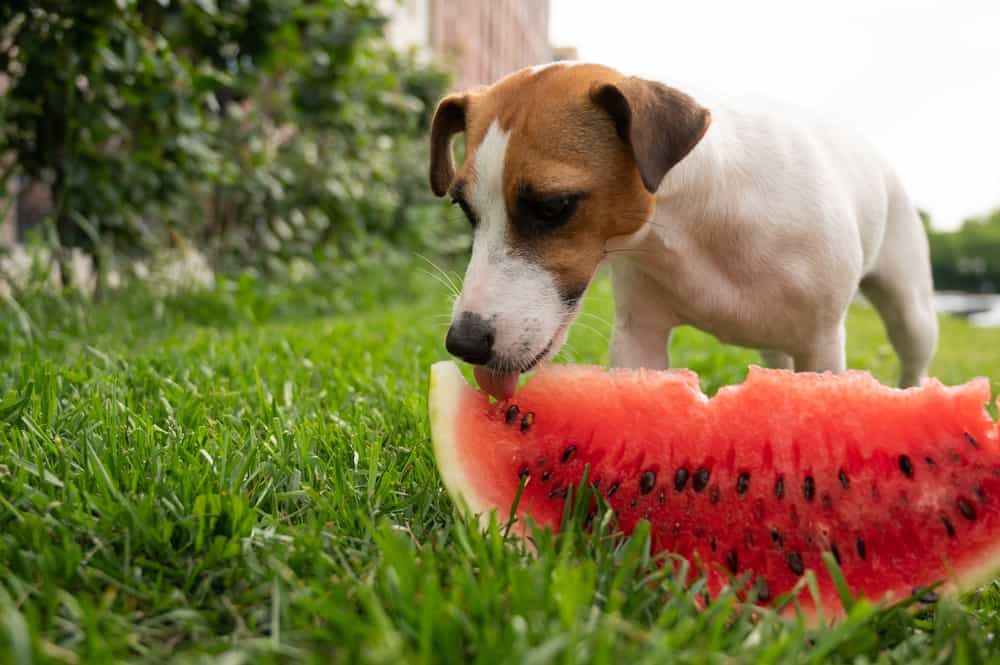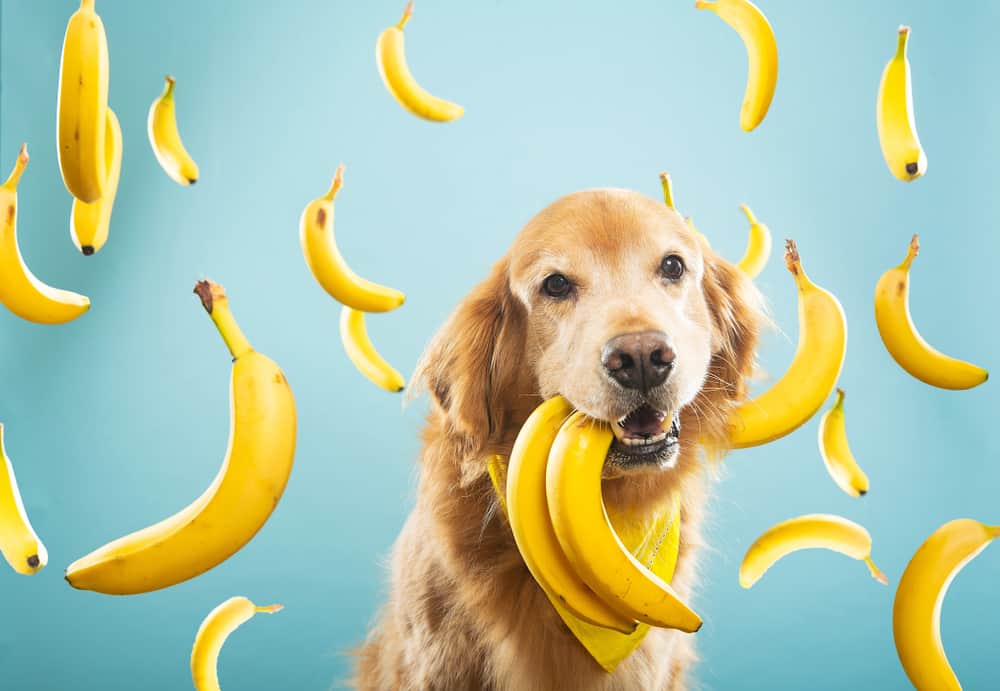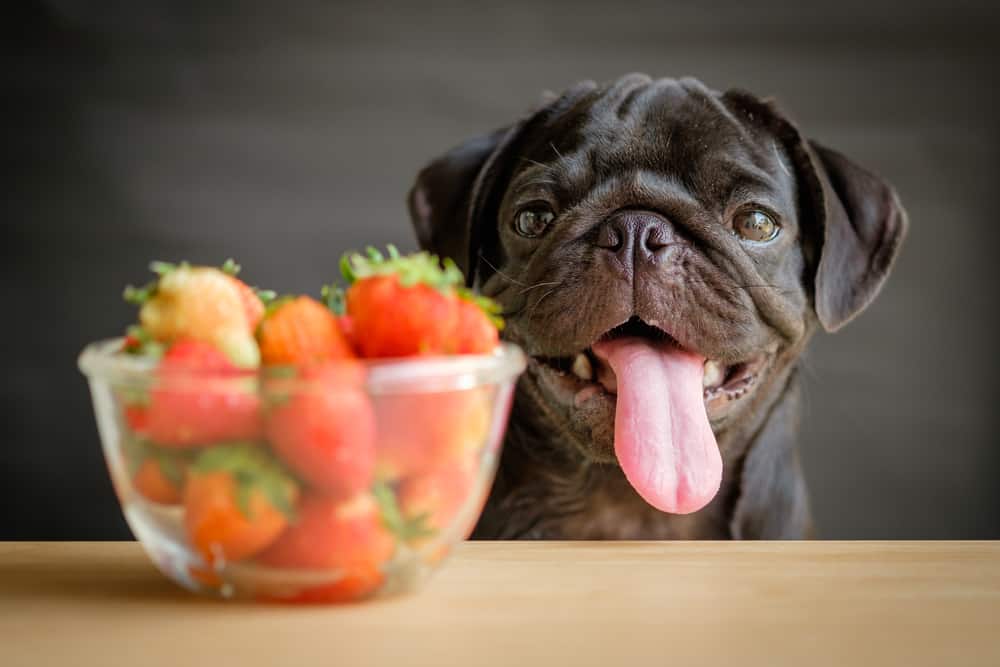“This post contains affiliate links, and I will be compensated if you make a purchase after clicking on my links.”
When you think of a healthy diet, you probably imagine one packed with fresh fruit. That might be a winner for us, but it’s not quite the same for our dogs.
So can dogs eat fruit? Well, fruit isn’t off the menu altogether – packed with vitamins, antioxidants, and fiber, it can be a great snack option for our four-legged friends. But it’s also high in sugar, so moderation is crucial for long-term weight control. Plus, some fruits can upset your dog’s digestive system – or worse – so it’s important to know your stuff before you stock up the fruit bowl.

While many fruits are perfectly safe for dogs to eat, some carry unwanted health risks. With this in mind, the experts at tailored dog food subscription, tails.com, have shared the items that are safe for dogs to consume, as well as those that should be avoided at all costs.
What fruit can dogs eat?
When prepared the right way, some fruits can be a tasty, healthy snack for dogs. Fruit dogs can eat include:
Apples – High in fiber and low in fat, apples make a delicious doggy snack. However, only serve the skin and flesh as apple seeds contain traces of cyanide, a substance that’s toxic to dogs.
Bananas – Bananas cram a lot of nutrition into a small dog-friendly package. They’re full of potassium, fiber, beta-carotene, vitamins C and E, lutein, and selenium. Always remove the peel, and serve in moderation to avoid giving your dog too much sugar.

Blueberries, Blackberries, and Raspberries – High in vitamins C, E, and K, and packed with antioxidants like anthocyanin, berries are great nutritional all-rounders. Blueberries contain good levels of B vitamins like folate and B6, too, while blackberries are a great source of potassium and magnesium. Meanwhile, raspberries are sweet, without being too calorific – great for dogs on a weight management diet.
Strawberries – These favorite fruits are full of health-boosting antioxidants. But strawberries are also higher in sugar than other berries, so it’s important to serve them in small amounts. Fresh and frozen are the same nutritionally, so see what your dog prefers.
Pears – Full of vitamin C, and packed with fiber, pears are another safe snack option. But as with apples, it’s important to remove the cyanide-carrying seeds before putting a pear anywhere near your dog’s bowl.
Pineapple – Packed with vitamins, minerals, and antioxidants, tangy and sweet pineapple – in moderation – is a great treat for your furriest family. Plus, this superfruit contains bromelain, an enzyme that provides anti-inflammatory properties that could help with your pup’s skin issues. Only serve the soft part of the fruit, removing the skin and core beforehand. Try them frozen, too!

Tomatoes – Tomatoes are refreshing and full of vitamins and are safe to serve in moderation. But it’s important to wait until they’re fully ripe, as tomatoes contain low levels of solanine, a poisonous compound that can affect the digestive and nervous systems. The levels of toxin decline as the fruit ripens.
Apricots, Peaches, and Plums – These squishy summer fruits are fine to give your dog, but the pit is poisonous, so never serve them whole. All three are bursting with antioxidants – like chlorogenic acid – and are rich in vitamins C, E, K, as well as B vitamins and potassium.
Watermelon – Watermelon is rich in antioxidants, potassium, vitamins, and high fiber. Plus, this crunchy, sweet fruit is 92% water, making it a great choice for extra hydration on hot days. Give this healthy snack after removing seeds and cutting off the rind. It’s great served in frozen chunks, too!
Which fruits are harmful to dogs?
While lots of fruit can play a part in a healthy dog diet, others are a complete no-go. Fruits you shouldn’t feed your dog include:
Citrus fruits – Oranges, lemons, limes, and grapefruit are all worth avoiding. Citrus extracts that have been extracted for antioxidant properties lack the essential oils and the Psoralen (toxic compound) found in whole citrus fruits. That means citrus extract can be used in food without negatively impacting your dog when added in a very small quantity. However, whole citrus fruit can cause some digestive upset if fed in large amounts.

Grapes, raisins, and currants – Nobody knows quite why these fruits are so dangerous for dogs – the leading theory is that they can contain traces of a mold that’s toxic to dogs. Whatever the cause, they’ve been linked to symptoms as severe as kidney failure, so they’re definitely best avoided.
Other dried fruit – When fruit is dried, the sugars get concentrated, making dried fruits like dates, figs, and apricots too high in sugar for dogs. The fresh versions are mostly OK, except grapes, which are harmful to dogs however they’re prepared.
Hedgerow berries – While some berries are nutrient-packed and safe for dogs, a lot of the ones you’ll see on your summer walks are far less friendly. Rowan, holly, juniper, and elderberries are all harmful or poisonous, so if you see your dog making a beeline for a berry-dotted hedge, intervene.

How can I introduce fruit into my dog’s diet?
As with any food you introduce to your dog, slow and steady is the best approach. Top tips for adding fruit to your dog’s diet include:
Make sure it’s dog-friendly: Before giving a new fruit to your four-legged friend, it’s a good idea to double-check it’s on the list of foods dogs can eat. There are lots of exceptions and serving points to remember, so even if you think you know, it’s always worth another look.
Check for mold: Only let your dog eat fruit that’s fresh – moldy fruit is as bad for dogs as it is for us. If you have fruit trees, keep your dog away at harvest time, so they don’t accidentally eat any spoilt or infested fruit that’s fallen on the ground.
Prepare it carefully: Thoroughly wash or remove the peel from any fruit you’ll be giving your dog – just as you would if you were eating it yourself.
Introduce it gradually: Even if food is safe to give your dog, serving a bowlful straight away can lead to an upset stomach. To avoid any unpleasant reactions, give your dog a small piece to try, then increase to a snack-size amount over time.
Serve in moderation: Fruit can be good for your dog in small quantities, but serving too much can have the opposite effect. Be especially careful with high-sugar fruits like strawberries and bananas.



















